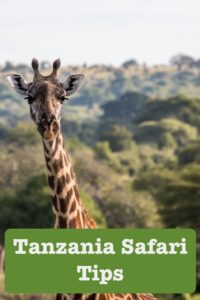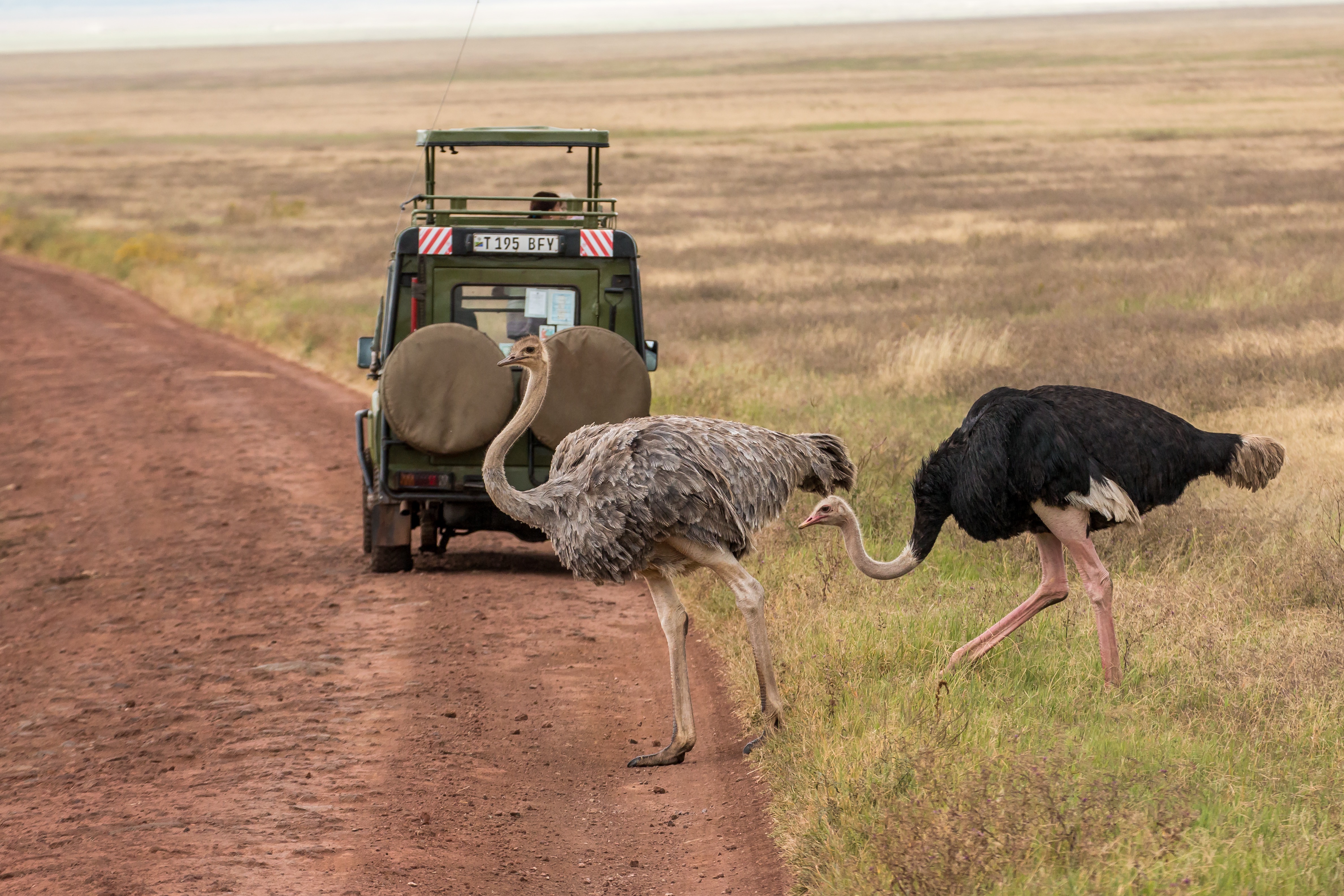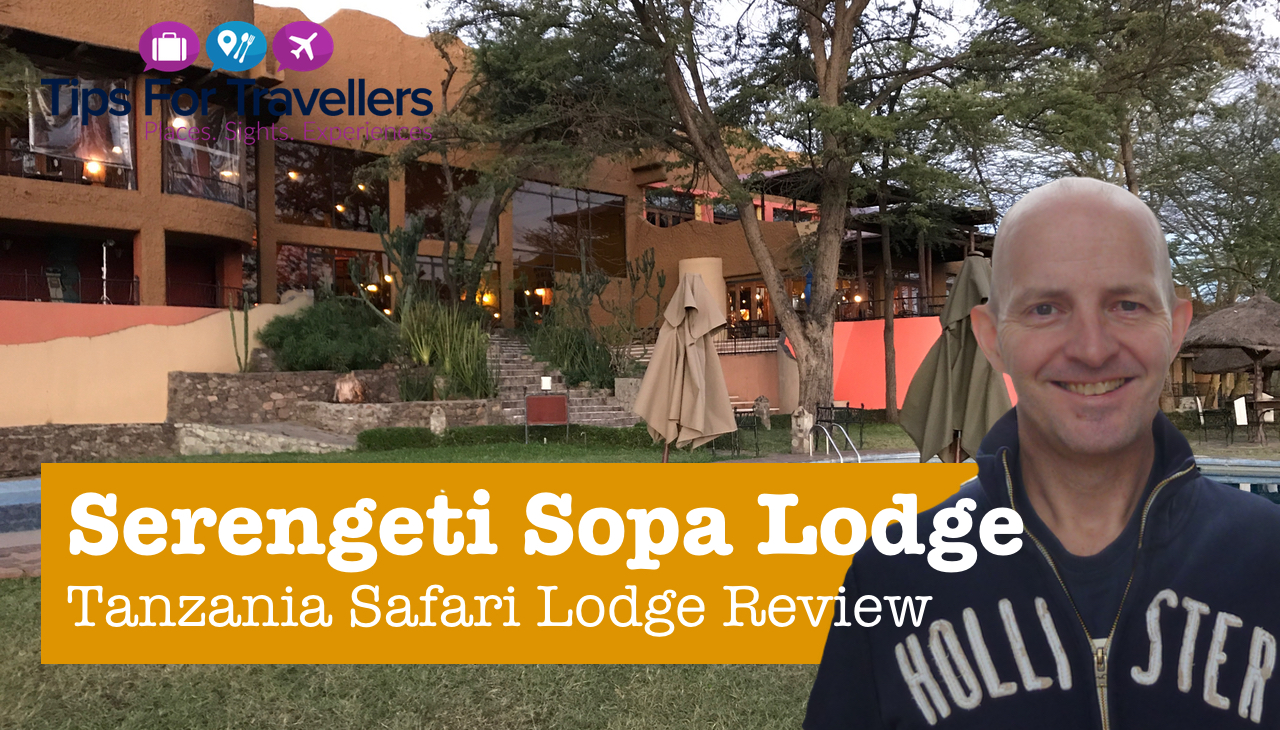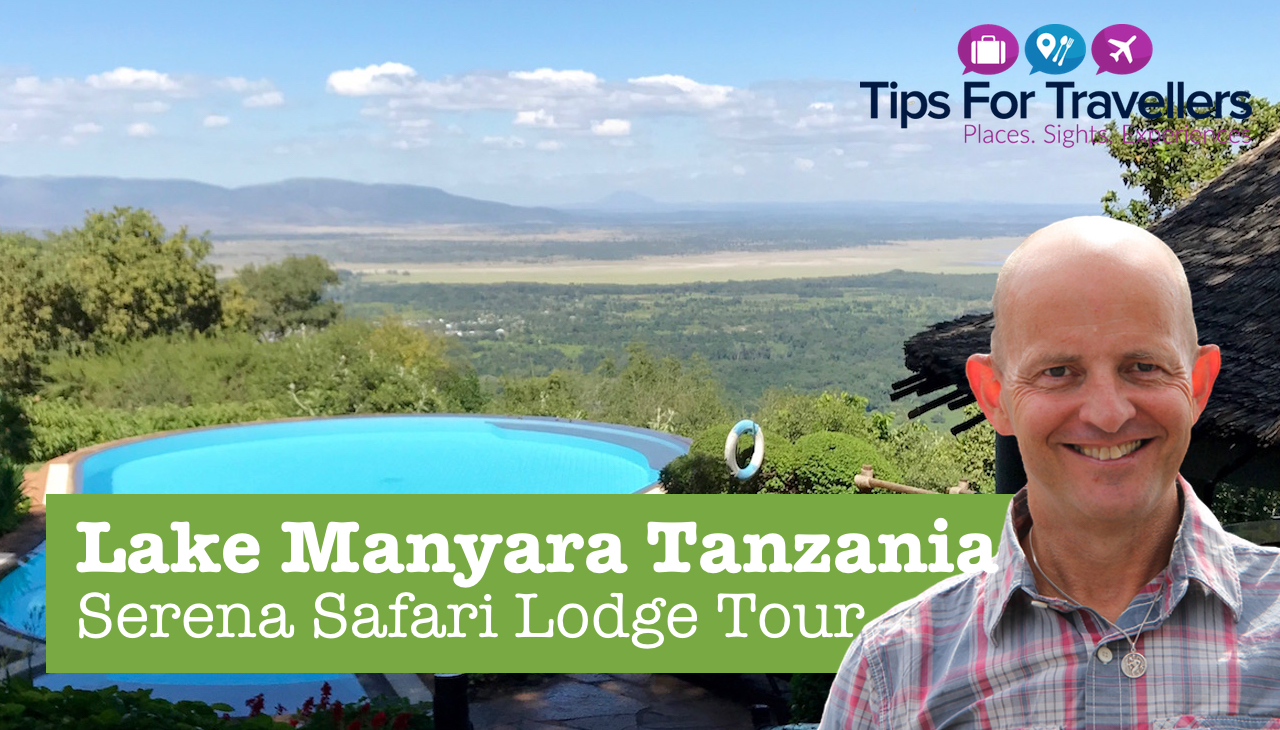Tanzania Safari Tips For Travellers. 11 Things To Know And Prepare For!
My Tips for a Safari In Tanzania: Things To Know And Prepare For
Heading to Tanzania on safari is one of my favourite all-time travel experiences. I had been on safaris in South Africa and Zimbabwe but this was even more magical, enthralling and I saw more animals than I had imagined I would. It exceeded all expectations on so many levels when I travelled there I travelled with Titan Travel on a 9-night “Wild Plains of Tanzania” trip. In this article I share 11 tips and advice on how to prepare for and get the most of a safari to Tanzania based on my experience.
#1: Best Time To Go
While much of the year is suitable there are some key times you should plan to go to get the best experience, and see animals easier. Experts recommend visiting in the dry season, which runs from June to October. During this time the animals are easier to find and see as they have to concentrate around waterholes and rivers, and there is less vegetation for them to hide in. There are fewer mosquitoes at this time of the year, because there is almost no rain. Skies are clear and most days are sunny.
It gets very busy in June and July, when the huge mass migration activity peaks in the Serengeti. However, with millions of animals on the move many travellers still want to still go there to experience it. But availability will be tighter and prices higher.
I travelled in late May into early June, and we had overall good weather and incredible sightings of animals – including the “Big Five”.
#2: Choose right Safari Tour Company
There are many operators and options available to do a safari in Tanzania with. To get the most I recommend you first draw up a list of your key requirements. So mine included (1) hitting the famous parks, (2) ensuring the greatest chance of seeing the “Big Five”, (3) staying in fairly luxurious lodges, (4) travelling with an expert local guide, (5) in as small a group as possible, (6) with fellow travellers of my age range and finally of course (6) within a reasonable budget.
I travelled with Titan Travel on their 9-night “Wild Plains of Tanzania” safari. We flew on KLM to Kilimanjaro Airport via Amsterdam Schiphol in a small tour group of just 9 people. We were split across two 4×4 trucks, with five people in one and four in another. The maximum each could have held was six. The tour was hosted by a local tour leader and two drivers and took in the must-see parks of Tarangire National Park, Ngorongoro Conservation Area and Crater, Serengeti National Park and Lake Manyara National Park. This ensured we saw the “Big Five” (Elephant, Lion, Leopard, Buffalo and Rhino) along with tens of thousands of other animals including zebra, wildebeest, giraffe, cheetah and ostrich. We stayed in luxurious lodges and everyone was in my age group or older.
When planning your trip you should know there are three international airports:
- Dar es Salaam is used by most international airlines, and is more convenient for business travellers or those exploring the southern safari circuit.
- Kilimanjaro International Airport (KIA), which is close to Arusha and is the handiest for safaris to the Serengeti, Ngorongoro, Tarangire and Lake Manyara parks.
- Some international flights land at Zanzibar.
#3: Visa
You probably will need one. These can be obtained in advance in your home country or at the airport on arrival. The line of people buying their visa on arrival can be long and so I recommend getting one before you travel.
To check if you will need a visa visit your local Tanzanian Embassy site or check using the Travvisa.com site at
https://www.travisa.com/Visa_SearchThere are some key requirements when applying for a Tanzanian visa:
- Passport must have at least three consecutive blank visa pages.
- Be valid for six months beyond entry date.
- Two (2) passport size photos taken on a white background within the last six months.
If travelling from the UK, like I was, I had the option of getting a visa from the embassy in London (http://tanzaniahighcomm.co.uk) in person or by post, or by using a service like CIBT Visas http://www.cibtvisas.co.uk/. I went into the embassy and got mine the same day within just a few hours.
#4: Malaria tablets and any inoculations.
Tanzania is a malaria area and you need to take anti-malaria medication. You must arrange this before you travel, as you need to start taking them before you arrive.
The medication requires a prescription in most countries. This can often be obtained from a Travel Clinic run by some large Travel Agents or Pharmacy Chains, so you may not need to visit your doctor. However, if you are on other medication you should check with them on any potential interactions as the type of pills prescribed need to take this into account.
Travelling out of the UK I was able to use an online review and prescription service offered by Boots Travel, who then delivered the pills to my home.
You may also need some other inoculations based on where you are travelling from or have been recently. For example, Tanzania requires proof of yellow fever vaccination upon arrival if you are travelling from yellow fever endemic countries/regions.
Some sites to check on the recommended inoculations and requirements that I found helpful in planning were:
- NaTHNaC (National Travel Health Network and Centre): http://nathnac.net
- NHS FitForTravel website: http://www.fitfortravel.nhs.uk
#5: Travel Insurance
It is essential to take out comprehensive travel insurance, especially for medical issues. Many of the tour operators will insist on this when taking your booking. Your policy should include coverage for air evacuation to a hospital and back home if required. If you are injured, or have a serious medical incident, you will need to be evacuated from the park or lodge to a main centre, or even out to a neighbouring country like Kenya, mostly likely by plane.
A relatively inexpensive option, if your policy does not cover evacuation, is to take out an evacuation policy with Flying Doctors. They provide air evacuation by bush plane out of the wilds of Tanzania to Nairobi, Kenya. More details at http://flydoc.org
#6: Luggage requirements
Take the smallest possible case you can. Think small and then go even smaller! It is also essential it is a soft case, so ideally a duffel / holdall / carryall.
If you are flying between lodges there will be strict limits on the size and shape of your luggage to ensure it fits in the small planes. The airline may also specify that the bags cannot have wheels on them either. So double check your travel documents carefully. If you are returning to the same airport at the start and end of your safari many of the providers will let you store excess bags or clothes in a lock up, but it is best to stick to the limitations.
If you are on land trip only there is also very limited space for bags in the back of the 4×4 trucks that you will be travelling in. You should have a small and soft bag for this as well, or they will struggle to fit them all in. It is easier to carry to and from the different rooms in the varied lodges you are likely to be staying in as you travel between different parks too. I travelled with a bag double the size of the more experienced safari travellers and regretted it. Luckily they could fit it in as everyone else was travelling light. It is a mistake I will not make again!
#7: Packing Essentials
Following on from the need to have a small bag, you need to be ruthless when packing -and you must pack light!
In addition to taking a camera (of course!), here are my recommendations on what to take:
- Take as few clothes as possible. You will not have to dress up in the evenings. Everyone will be casual. The clothes should be as breathable as possible, so cotton is good, and ideally quick drying if you do need to rinse them out.
- It will be dusty on safari and you want to blend in. So have neutral colours (green, tan and brown) and I recommend bringing one change of shirt for every day and have one or two long-sleeved shirts that you use for the evening (these protect you better from mosquitos which tend to come out at this time).
- Shorts and a T-shirt are fine for safari. You should though have at least one pair of long trousers for the evening to protect against mosquitos.
- Bring layers, like a sweatshirt or jacket, as it can get chilly early morning or evenings on game drives.
- Bring a waterproof jacket. I brought one that could be crumpled up and took up very little room. It also provided an extra layer when it was chilly.
- Although many lodges have same day laundry service as you are likely moving about assume you will not use it, so bring a change of underwear for every day.
- Bring a pair of good walking shoes / boots and one pair of more casual shoes, such as flip-flops or sandals for evenings in the lodge.
- Bring swimwear as most lodges will have a pool and a refreshing swim after a day out on safari can be very welcome in the hot season.
- Do not bring camouflage pattern clothes.
- Toiletries and First Aid Items:
- Sunscreen
- Anti-mosquito
- Hand Gel
- Personal First Aid Kit with a supply of your favourite medications like headache pills, anti-diarrheal, plasters and a tooth repair kit (for quick fixes as a dentist will be hard to find!)
- Binoculars are a nice plus!
- Torch as the area is prone to power cuts. Though if you have a SmartPhone this will be able to double as a torch.
- Alarm clock or phone (to wake up for morning drives!).
- The sockets take UK style three-pin plugs, so bring an adaptor if you not from UK. It is best to use a travel adapter with a ‘surge protector’ to protect your equipment, although I found most of the lodges had extension cords with multiple plug sockets that were surge protected.
Things to leave behind:
- Your laptop! It is extra weight, could get damaged in small bags and with the bumping around on dirt roads. The Wi-Fi in the lodges and parks is erratic and in some there is none. You will also have limited time to use it. Your SmartPhone or Tablet is probably enough if you have one.
#8: Currency and money
The best currency to take is US Dollars. They are accepted virtually everywhere and save having unwanted local currency at the end of the trip. You should bring small bills and they need to be in good condition and as new as possible. Locals and stores will not take torn or notes in poor condition.
Tipping is quite common and expected. So plan to tip the lodge staff if they help you with your bags. The guide should be tipped up to US $ 20 to US $ 30 per group per day. I gave the driver and guide $50 each for the 9 days I was with them.
#9: Photography: If want to take pictures come prepared
Before getting into the technical side, there are three key things you need to know and be aware of:
- Always ask locals before taking their pictures, especially the Maasai. Many will expect some tip if you take their photo, and could even be quite aggressive if you take it without approval or paying.
- Many parks in parts of Africa are starting to ban the use of SmartPhones and Tablets for picture taking. This is because the pictures have GPS location data imbedded and if posted live, or close to live, on social media can provide poachers with valuable information. Check before you go if Tanzania has introduced any limits. At the time of writing this guide they did not have any restrictions.
- Do not bring a drone unless you have a permit before coming. They were not allowed in the parks when I travelled as the authorities are considering, and studying, the impact on animals and there is a real concern that poachers may use them, hence the blanket ban.
To take great pictures of animals on safari you really need a camera with a good zoom lens. This needs to be at least 300mm. This is what I used to take my photographs. You can view them at https://tipsfortravellers.smugmug.com/Tanzania/
Some tips I have for your photography are:
- Get close through using a zoom lens or crop pictures afterwards using editing software. The former is better to ensure good quality.
- If you have a DSLR, consider hiring a zoom lens rather than buying one, as they can be pricey to purchase. There are sites in the UK like http://www.lensesforhire.co.uk/and in USA like https://www.lensrentals.com and https://www.borrowlenses.com
- Focus on the eyes when taking pictures. Take multiple shots and try and get one with the animal looking directly into the lens.
- Take lots of charged batteries. You may not be always be able to charge properly in lodges or camps so whenever you can charge them up.
- Take lots of SD cards.
- Bring a beanbag to rest your lens on. The zoom lens can be heavy and shooting animals at distance can lead to camera shake and out of focus pictures. The beanbag can be quickly thrown on the side of the truck and is very versatile. Do not bring tripods, as there will be no room to store them.
- Switch off the flash.
- Don’t spend all time behind a lens! Make sure you enjoy seeing the animals live and not just through a lens.
#10: Staying connected
You should let your friends and family know that you will be out of contact for much of the time you are way. The mobile signal will be patchy or non-existent and roaming charges are very high (around $3 or £2 a minute to receive and make calls to and from Tanzania). I did take one of those roaming devices with me but this proved largely useless as they rely on the mobile phone signal. So I do not recommend these.
I did have some success occasionally using FaceTime audio across the Wi-Fi in some lodges, but it was inconsistent and erratic.
You should let your family and friends have your itinerary and the landline numbers of the lodges you will be staying at as well as the safari operator numbers. They can then use these if there is any emergency and need to contact you.
#11: Know what to expect and be prepared
Although it is very rewarding and you will see a lot in Tanzania, going on a safari there can be tiring. To make the most of the potential to view animals the days are long with lots of time in the truck out sightseeing or moving between parks and lodges. There will also be a number of early starts. On average we spent about six hours a day in the van. It can be tiring and so naps in between and early to bed is recommend.
Unlike safari vans in places like South Africa, the vans will not be open. The roof will be raised up so you can stand up to view and take pictures of the animals.
Here are some things to expect and be ready for:
- Expect crowds and a number of vans when you spot animals, especially the harder to find beasts like lions, leopards and cheetah. The parks request no more than five vans when animals are spotted but not all stick to this.
- English is widely spoken but a few words of Swahili will always be appreciated.
- Only drink bottled water, including for brushing teeth. This will be provided in your room.
- In many lodges after sunset you will be escorted to and from your room for dinner in the main lodge building, to avoid any unpleasant or unexpected encounters with animals.
- Most meals will be buffet style.
- When heading out on a game drive in addition to wearing neutral coloured clothing, avoid strongly scented deodorant and perfumes.
- Take along tissues and a plastic bag in case you are “caught short” and your guide cannot take you to toilet facilities in the park and you have to go behind the van to “check the tyres” (the polite expression for having to do your business!)
Final Thought
I loved my safari in Tanzania. The people were welcoming and friendly, the wildlife abundant and impressive and the lodges of great quality. It is definitely one of my favourite trips of all time. I hope these tips help, and I wish I had been given them before I went. If you have any to add please leave a comment to help other travellers.
Watch my Video of the Highlights
Some Other Useful Links
Wildlife Overview:
- https://www.insightguides.com/inspire-me/blog/tanzanias-wildlife-africas-big-5-and-other-mammals-to-see-on-safari
- https://www.safaribookings.com/tanzania/wildlife
General Tips:
- https://www.tanzania-expeditions.com/tanzania-travel-tips/
- http://www.tanzaniawildlifesafaris.com/tanzania-travel-tips
Pin It

Disclaimer: I travelled as a guest of Titan Travel on a 9-night “Wild Plains of Tanzania” safari.
If you enjoyed this post:
- Follow Tips For Travellers on: YouTube, Instagram, Facebook, Twitter and Pinterest.
- Sign up for the monthly newsletter. includes a free eBook to download every month.
- Never miss a post by signing up for the Latest Tips For Travellers email.
Want to Support Tips For Travellers?
- Book a cruise via The Tips For Travellers Cruise Line: email / UK Phone 0800 852 7801/ Ex-UK +44 1273 836 639
- Next time buying on Amazon USA or Amazon UK click on these links
- Become a supporter via Patreon
- Make a donation via PayPal
























